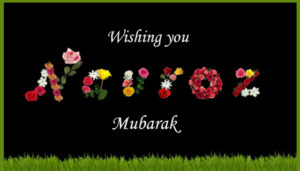The Parsi New Year, Jamshed-e-Navroz is celebrated on the first day of the first month of the Shehenshai calendar followed by the Zoroastrian faith. [This year it falls on 20-21 March]
Jamshed Navroz is one of the three major festivals celebrated in the Parsi calendar. It is the first day of the first month of the Zoroastrian calendar thereby marking the Parsi New Year. The term Navroz has been derived from two Persian words, ‘nav’ meaning ‘new’ and ‘roz’ meaning ‘day’. Hence, Navroz signifies ‘new day’.
The Zoroastrians also believe that on this day, the king of Persia, Jamshed ascended the throne. King Jamshed was the one who introduced solar reckoning into the Parsi calendar.
Named after the Persian ruler Jamshed, in whose reign the festival began, Jamshed-e-Navroz is symbolic of rejuvenation and rebirth.
As in all the other New Year festivals, at Navroz there’s much excitement in the air. Homes are cleaned and decorated with ornate rangolis, new clothes are worn, and greetings- along with the customary sweets- are exchanged.
This being the start of a new year, prayers are offered at the Fire Temple, and it’s usual for people to go thrice to the temple during the day to worship Khorshed and Meher, the two divine beings who preside over the sun and the moon respectively.
Celebrations and Traditions
Festivities of Navroz begin with cleaning and decorating of homes. Jasmine and rose are flowers primarily used for decoration besides other symbolic objects of Navroz.
Parsees visit the fire temple for thanksgiving prayers and offering sandalwood sticks to the fire. After the prayers, they greet each other ‘Sal Mubarak’ and exchange gifts.
It is a custom to lay down a table and place a copy of the Gathas, a lit lamp or candle, a shallow ceramic plate with sprouted wheat or beans, small bowl with a silver coin, flowers, painted eggs, sweets and rosewater, and a bowl of water containing goldfish in it. They all signify prosperity, wealth, colour, productivity, sweetness and happiness.
Delicacies of Navroz
Food forms an essential part of Navroz celebrations. ‘Faluda’ i.e. milk flavoured with rose essence, is the traditional drink prepared on this day. Pulao, rich with saffron, is a must for the lunch on Navroz. ’Ravo’, a popular Parsi dish is also made on this day.
The Navroz table has seven food items beginning with ‘sh’ (in Persian): sharab (wine), shakar (sugar), shir (milk), shirin berenjor (sweet meat), shahad (honey), shirin (sweet), and shira (syrup). The table also lays down seven eatables beginning with ‘s’: sirka (vinegar), sumac (spice), sumanu (pudding made from wheat germ), sib (apple), sabzi (green vegetables), senjed (sorb tree berry) and seer (garlic).
Each of these food items signifies creation. Along with these, fresh fruits, dried fruits, nuts, and various seeds are also placed on the table. The lady of the house takes the visitors to the table, traditional rituals are performed and then everyone sits down to share and eat these food items.
[Submitted by Deb Boruah]


